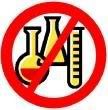Studies have shown that our indoor environments are five times more polluted than outdoors and three times more likely to cause cancer. Because our homes depend on recycled air that is not diluted in a large atmosphere like outside, it is all the more important to keep the inside of your home clean, without polluting chemicals.
Toxic chemicals around the home and in the kitchen
All purpose cleaners, ammonia-based cleaners, bleach, dishwashing detergents, disinfectants, drain cleaners, floor cleaners, oven cleaners and scouring powders all contain dangerous chemicals. Ammonia is an eye irritant and can cause headaches and lung irritation. Children with asthma are especially sensitve to these fumes. Even at low levels, ammonia fumes may cause coughing, wheezing, shortness of breath, laryngitis and watering eyes.
The phenol and cresol in disinfectants and air fresheners are corrosive and can cause diarrhea, fainting, dizziness and kidney and liver damage. These chemicals deactivate sensory nerve endings, attack the liver, spleen, pancreas and central nervous system. It takes more than a year to eliminate the toxic effects produced by spraying 2 oz. of these products.
The nitrobezene in furniture and floor polishes can cause skin discoloration, breathing problems, vomiting and is associated with cancer and birth defects.
Formaldehyde, which is common to many products is a known carcinogen and is a strong irritant to the lungs, skin, eyes and throat. It may also cause headaches, nosebleeds, dizziness, memory loss and shortness of breath.
Toxic chemicals in dishwashing detergents
Most dishwasher detergents contain chlorine in a highly concentrated dry form and is the number one cause of child poisonings. Dishwashing detergents usually contain a central nervous depressant called naphtha and a possible liver poison call diethanolsamime. Our dishes are the most frequently cleaned objects in our homes and the residues from toxic diswashing detergents accumulates on the dishes and is picked up by our food.
Toxic chemicals in the laundry room
Laundry detergents contain many chemicals including ammonia, enzymes,sodium, tripolyphosphate, naphthalene, phenol and sodium nitilotriacetate. These chemicals are linked to allergies, sinus problems, rashes and itches. The residue left on the clothes and linen is absorbed through your skin. The scent of the laundry detergent, for example, d-limonene, can irritate the skin and eyes, produce breathing difficulties and bronchial irritation. The phthalates that are used to make the fragrane last may disrupt hormones and cause birth defects.
Fabric softeners contain ammonia, petroleum distillates and strong artificial fragrances. They may also contain chloroform, benzyl acetate and pentane; chemicals which are known to cause cancer and/or damage the brain, nerves and lungs. The heating of the dryer makes them even more dangerous.
Toxic chemicals in the bathroom
Toilet bowl cleaners contain hydrochloric acid or sodium acid sulfate which can irritate the skin and eyes and can damage the kidneys and liver. Hypochlorite bleach is corrosive and it can irritate the skin, eyes and respiratory tract. Some toilet bowl cleaners and rim blocks may contain naphthalene, an agent which may damage or destroy red blood cells, causing a condition called hemolytic anemia. With long term expose, naphthalene may cause liver and kidney damage, skin allergies, cataracts and damage in the retina. Inhalation may cause brain cancer in young children.
Regular shampoos and soaps contain harsh chemicals. "No tears" baby shampoos contain some of the worst chemicals including anesthetizing agents which mask the burning sensation that would be felt when the shampoo comes in contact with the eyes. Sodium laurel sulfate and its forms that are found in shampoos, soaps and toothpastes can lower brain acuity and are attributed to blindness.
Toxic chemicals in air fresheners
Air fresheners are amongst the worst indoor air pollutants. Most air fresheners coat your nasal passages with an oil film or release a nerve deadening agent to interfere with your ability to smell. They may contain methoxychlor which is a pesticide that over-stimulates the central nervous system and accumulates in fat cells.Air fresheners available in aerosol form normally contain petrochemical propellants such as butane, isobutane and propane which at high concentrations, are neurotoxic. These chemicals are easily inhaled where they may wreak havoc on children and asthmatics by irritating the airways.
Some air fresheners contain formaldehyde, a known carcinogen and naphthalene, which we discussed in the toilet bowl cleaners section. Paradichlorobenzene (PDB) may also be present and is a suspected to cause cancer and damage to the reproductive system, liver and nerves.
Resources:
The Household Toxic Tour
Chemical Warfare Agents and Toxic Waste Disguised as Household Cleaning Products
Top "10" Hazardous Household Chemicals
Fact Sheet: Safe Substitutes at Home: Non-toxic Household Products

Wednesday, August 22, 2007
Subscribe to:
Post Comments (Atom)

No comments:
Post a Comment